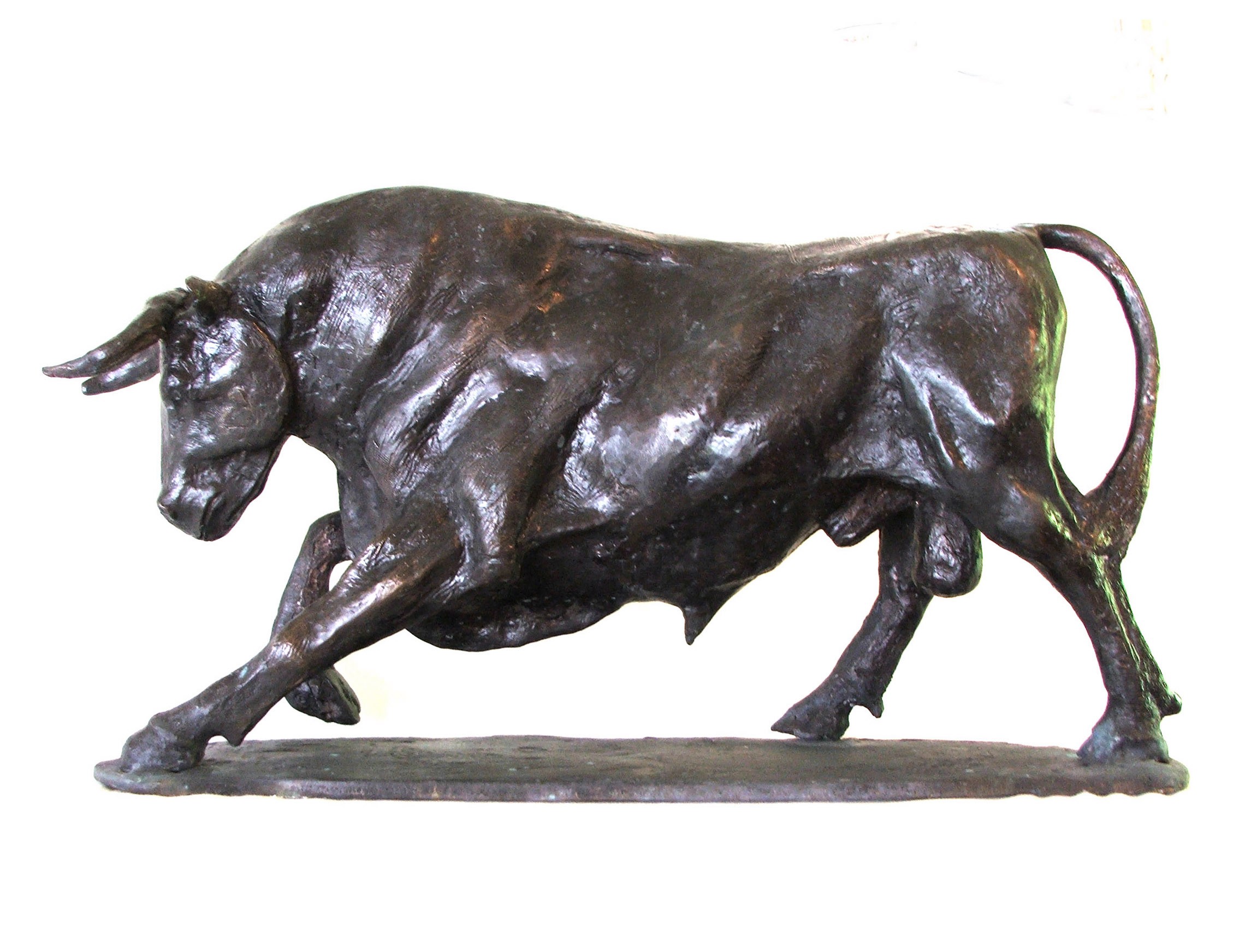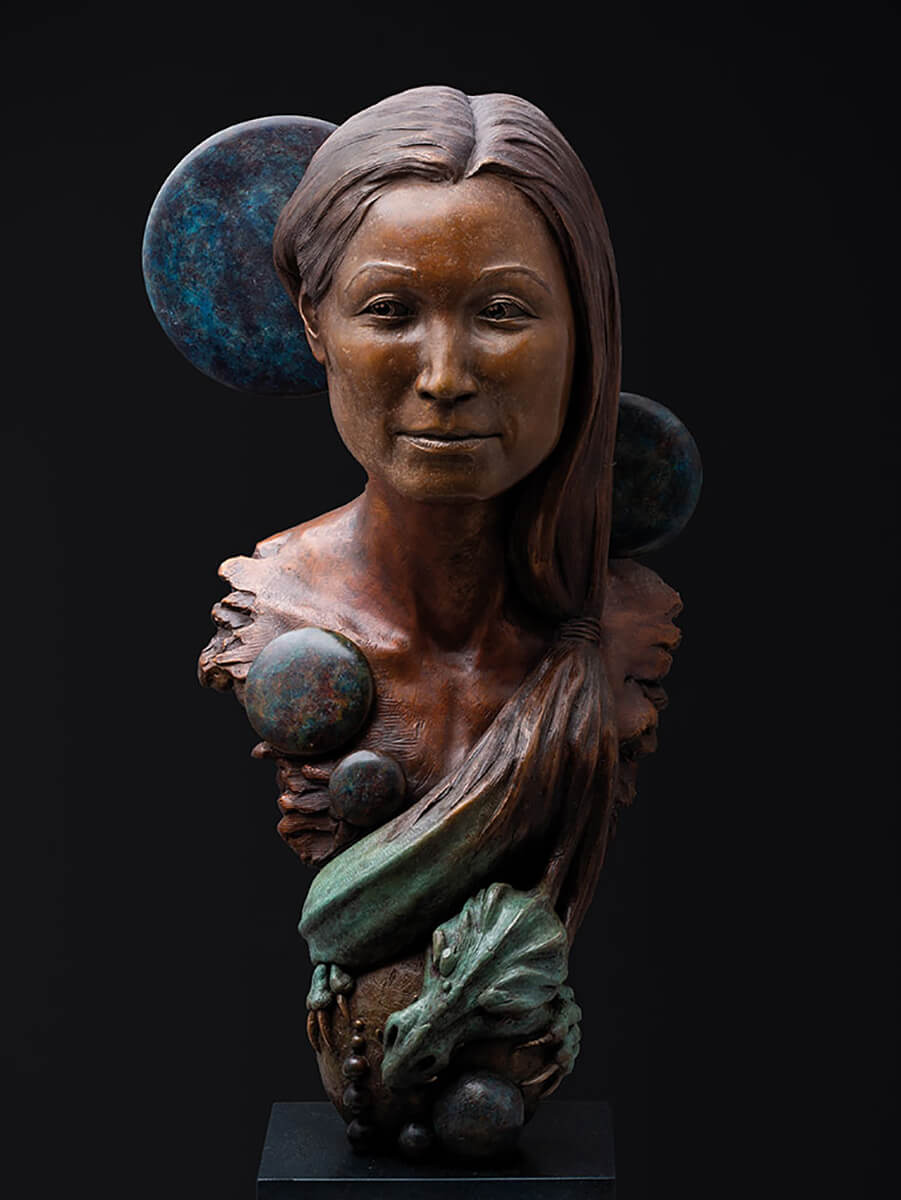Contemporary Marvels: Study the Globe of Contemporary Sculptures
Wiki Article
The Advancement of Sculptures: From Old to Modern
The Evolution of Sculptures: From Old to Modern.Sculpture, among the oldest types of art, has been an integral component of human people for centuries (Robert C Hitchcock Sculptor). From the old human beings of Egypt and Greece to the contemporary era, sculptures have progressed, reflecting adjustments in imaginative strategies, materials, and social impacts. This journey via time traces the development of sculptures, checking out the changes in vogue, subject, and artistic expression
Beginning with the old world, sculptures crafted from rock and later bronze recorded the significance of deities, leaders, and daily life. The Renaissance period observed a revival of classical sculpting methods, as artists sought to mimic the elegant types of old Greek and Roman sculptures. In the modern period, artists tested typical borders, welcoming abstraction and experimentation with brand-new products.

This exploration will certainly look into the diverse development of sculptures, disclosing the abundant tapestry of creative expression throughout different durations and societies.
Old Sculptures: From Stone to Bronze
Old sculptures transitioned from being carved out of rock to being cast in bronze. Rock sculptures, while remarkable in their very own right, were limited by the nature of the product.The intro of bronze as a tool for sculptures caused a revolution in artistic expression. Bronze offered artists the opportunity to create natural and detailed forms that were not feasible with rock. The procedure of casting bronze enabled for the creation of several duplicates of a sculpture, making it possible for broader circulation and preservation of these artistic work of arts.
The transition from rock to bronze additionally saw a change in the subject of sculptures. While stone sculptures predominantly shown gods, goddesses, and mythological figures, bronze sculptures started to reflect a broader variety of topics, consisting of day-to-day individuals and animals. This expansion of subject matter showcased the adaptability and flexibility of the bronze tool.
Renaissance Rebirth: Sculpting in the Classic Design
The Renaissance rebirth of sculpture observed a renewal in the timeless design, building upon the developments made during the transition from stone to bronze in ancient sculptures. During this period, artists looked for to recreate the classical visual and perfects of beauty that prevailed in old Greek and Roman sculptures.Among the vital qualities of the Renaissance rebirth was the emphasis on naturalism and the human type. Artists like Donatello and Michelangelo make every effort to record the physiological information and expressions of their topics with extraordinary accuracy. They studied the body and included their monitorings right into their sculptures, resulting in realistic and lifelike representations.
Another important facet of the Renaissance resurgence was the exploration of viewpoint and depth. Musicians made use of methods such as contrapposto, where the weight of the body is shifted away, creating a feeling of motion and dynamism. They also tried out with different materials, consisting of marble and bronze, to accomplish a level of class and complexity in their sculptures.
The timeless style of the Renaissance revival had a profound influence on later durations of art, acting as a foundation for the growth of Western sculpture. It brought a renewed appreciation for the appeal and grandeur of the human type, and its legacy can still be seen in contemporary sculptures today.
Innovation and the Avant-Garde: Breaking Standard Borders

One of the essential attributes of modernist sculpture was the focus on abstraction. Carvers relocated away from sensible depictions and rather concentrated on capturing the essence of the subject via simplified types and geometric forms. This departure from conventional representation enabled artists to express their feelings and concepts in an extra subjective and individual way.
Moreover, the avant-garde movement tested social norms and conventions, encouraging artists to experiment and press the limits of their art - Equine Sculptures. Artists began integrating non-traditional products such as located items, industrial materials, and also natural environments into their job. This expedition of new products and methods not only increased the opportunities for sculpture but also challenged the conventional concepts of what could be considered art
Contemporary Sculptures: Exploring New Products and Concepts
With a concentrate on exploring brand-new materials and concepts, modern sculptures have changed the area of art. Artists today are pushing the borders of conventional sculpture by utilizing ingenious materials and trying out with abstract concepts. These sculptures test conventional ideas of definition, form, and materiality, inviting visitors to engage in a brand-new and provocative artistic experience.Contemporary artists are embracing a wide variety of products, including plastic, glass, metal, and also raw material. Equine Sculptures. They are not limited to the standard tool of stone or clay, enabling for higher civil liberty and experimentation. This change in the direction of unconventional products has actually opened new possibilities for artists to develop sculptures that are vibrant, interactive, and visually striking
In addition to checking out brand-new products, modern sculptures also explore facility and abstract principles. Artists are now exploring styles such as identification, social concerns, and the setting, using sculpture as a powerful medium for social discourse and self-contemplation. These sculptures challenge audiences to think critically and engage with art on a much deeper degree, triggering conversations and prompting emotional feedbacks.
International Impacts: Sculptural Practices From All Over The World

In old Egypt, sculptures were produced largely for funerary and spiritual objectives. The iconic sculptures of pharaohs and gods, such as the Great Sphinx and the bust of Queen Nefertiti, display the Egyptians' proficiency of rock sculpting and their idea in the immortality.
In old Greece, sculpture reached its height throughout the classic duration. Influenced by the suitables of consistency, elegance, and proportion, Greek sculptures stressed the human kind and commemorated the accomplishments of athletes, gods, and heroes. The popular sculptures of Aphrodite of Knidos and the Discobolus exemplify the Greeks' quest of perfection in sculptural art.
In old Rome, sculpture offered both imaginative and political functions. Equine Sculptures. Roman sculptures usually illustrated emperors, generals, and mythical figures, reflecting the power and magnificence of the empire. The marble sculpture of Augustus of Prima Porta and the huge Arch of Constantine are significant examples of Roman sculptural success
Oriental sculptural customs, especially in India, China, and Japan, have likewise check over here had a profound influence on the advancement of sculptures. Indian sculptures, such as the intricately sculpted holy places of Khajuraho and the colossal statues of Buddha, exhibit a rich combination of spiritual, mythical, and building elements. Chinese sculptures, identified by their fine craftsmanship and attention to information, commonly represent deities, animals, and legendary numbers. Japanese sculptures, influenced by Buddhism, highlight simplicity and serenity, seen in the calm statues of Buddha and the stylish art of bonsai.
The worldwide impacts on sculpture remain to evolve in the contemporary period. Artists today draw ideas from various sculptural customs, including brand-new materials, methods, and principles to develop provocative and innovative artworks. The fusion of various social impacts has triggered a vibrant and diverse sculptural landscape, reflecting the interconnectedness of our worldwide culture. As we aim to the future, it is particular that the global influences on sculpture will certainly remain to form and redefine this ancient art form.
Verdict
In conclusion, the advancement of sculptures has seen a change from old rock and bronze functions to the timeless rebirth throughout the Renaissance. Today, modern sculptures check out brand-new products and concepts, while also drawing motivation from international sculptural customs - Portrait Sculptor.From the old worlds of Egypt and Greece to the modern-day era, sculptures have developed, reflecting modifications in creative methods, materials, and cultural influences.Beginning with the old world, sculptures crafted from stone and later on bronze recorded the essence of deities, rulers, and daily life.Ancient sculptures transitioned from being sculpted out of rock to being cast in bronze. While rock sculptures mostly depicted gods, goddesses, and mythological figures, bronze sculptures began to show a more comprehensive array of topics, including everyday people and animals.In conclusion, the development of sculptures has seen a shift from ancient stone and bronze works to the classic resurgence during the Renaissance.
Report this wiki page